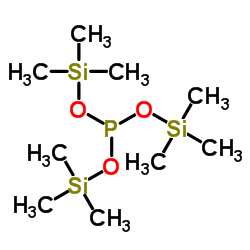Gas chromatographic mass spectrometric detection of dihydroxy fatty acids preserved in the 'bound' phase of organic residues of archaeological pottery vessels.
Fabricio A Hansel, Ian D Bull, Richard P Evershed
文献索引:Rapid Commun. Mass Spectrom. 25(13) , 1893-8, (2011)
全文:HTML全文
摘要
A methodology is presented for the determination of dihydroxy fatty acids preserved in the 'bound' phase of organic residues preserved in archaeological potsherds. The method comprises saponification, esterification, silica gel column chromatographic fractionation, and analysis by gas chromatography/mass spectrometry. The electron ionisation mass spectra of the trimethylsilyl ether methyl ester derivatives are characterised by fragment ions arising from cleavage of the bond between the two vicinal trimethylsiloxy groups. Other significant fragment ions are [M-15](+.), [M-31](+.), m/z 147 and ions characteristic of vicinal disubstituted (trimethylsiloxy) TMSO- groups (Δ(7,8), Δ(9,10), Δ(11,12) and Δ(13,14): m/z 304, 332, 360 and 388, respectively). The dihydroxy fatty acids identified in archaeological extracts exhibited carbon numbers ranging from C(16) to C(22) and concentrations varying from 0.05 to 14.05 µg g(-1) . The wide range of dihydroxy fatty acids observed indicates that this approach may be applied confidently in screening archaeological potsherds for the degradation products of monounsaturated fatty acids derived from commodities processed in archaeological pottery vessels.Copyright © 2011 John Wiley & Sons, Ltd.
相关化合物
| 结构式 | 名称/CAS号 | 分子式 | 全部文献 |
|---|---|---|---|
 |
(三甲基硅基)亚磷酸盐
CAS:1795-31-9 |
C9H27O3ψ3 |
|
Vibrational spectra of trimethylsilanol. The problem of the ...
2004-04-01 [Spectrochim. Acta. A. Mol. Biomol. Spectrosc. 60(5) , 1169-78, (2004)] |
|
Removal and determination of trimethylsilanol from the landf...
2012-01-01 [Bioresour. Technol. 103(1) , 16-20, (2012)] |
|
Enrichment of H(2)(17)O from tap water, characterization of ...
2011-01-01 [Anal. Chem. 83(1) , 231-9, (2011)] |
|
Metabolic studies of turinabol in horses.
2007-03-14 [Anal. Chim. Acta 586(1-2) , 208-16, (2007)] |
|
Potassium trimethylsilanolate induced cleavage of 1,3-oxazol...
2003-04-07 [Org. Biomol. Chem. 1(7) , 1106-11, (2003)] |